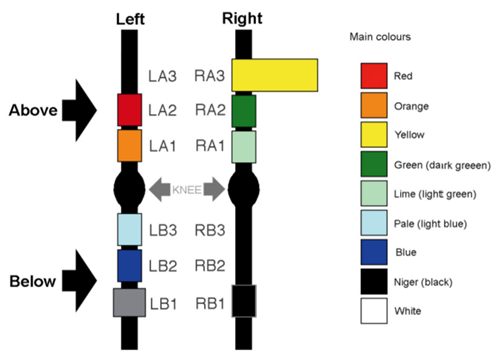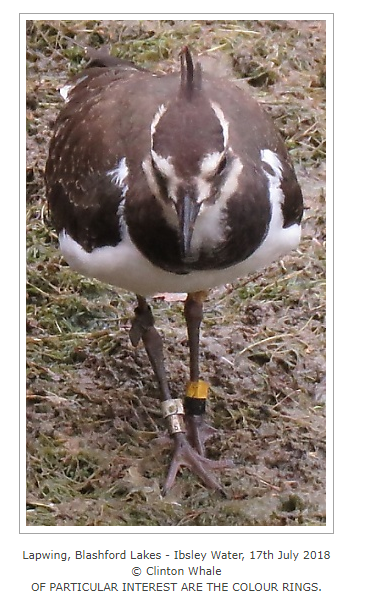
The study of bird movement has long fascinated people, if we look back through history ideas on where seasonal migrants go in the wintertime crops up again and again. Our personal favourite story within the team is that of the swallow. In the valley, swallows arrive in the spring and leave in late summer, only to return the following spring. But where do they go? Well, in the 16th century, a Swedish archbishop reporting in History and Nature of the Northern peoples remarked that those swallows disappear into the reeds in autumn into the waters below them, bound mouth to mouth and wing to wing. Indeed, it was remarked that North Sea fishermen often hauled mixed catches of swallows and fish. We of course now know that swallows do not spend their winter like toads living at the bottom of ponds, but rather migrate across the Mediterranean, Sahara Desert and continue south only to turn around again the following spring and come back. Which seems more likely I wonder?
Well, we can say that the latter is true in part through ringing studies, which use uniquely numbered metal rings fitted to birds, these are then recaptured and recorded. From this we can calculate, distances travelled, direction and timings. We have learned and continue to learn a great deal about the movements and survival of birds from ringing, but it relies on a bird being encountered in the hand again. Colour-marking maximises the potential for data collection by allowing observers to identify or resight individuals without the need to recapture them.
Colour-Marking
Colour-marks come in two main types, those being either a combination of uncoded coloured rings or flags (elongated rings) of which the combination of colours and positions form a unique combination or an engraved mark with a unique code (figure 2). In the case of our lapwing, each individual is fitted with a combination of colour-rings, with two rings below the knee on each leg with one being its metal ID ring, a black flag on one leg above the knee and a single colour-ring on the opposite leg above the knee.

Positions and common colours of colour-rings used on waders. Illustration take from http://limosa.no.sapo.pt/Key.html
Of course, every method has its limitations and in the case of colour-marks it is visibility, you need to be able to see the rings well enough to record them. Subsequently, colour-marking projects are particularly useful in open-habitats and for birds with longer legs such as waders. It is for this reason that we use them on lapwing and they are widely used on waders generally – though I will say from my own experience – a long-legged Black-tailed Godwit on a mudflat is a lot easier to see than a Lapwing in water meadow field or in rapidly growing spring cereal.
Colour-marking is a useful technique but must be regulated for both welfare and to provide useful data by avoiding duplication. In the UK, it is conducted under licence, with the prior submission of a project proposal and annual reports submitted to the coordinating body, in our case the British Trust for Ornithology and International Wader Study Group.
Colour-marking is used in our project to inform our understanding of lapwing survival, site fidelity and movement.

Colour-ringed lapwing Y//YB-Bf//Wm. This juvenile bird was seen on 17/07/2018, Blashford Lakes by Clinton Whale and ringed as a chick, this summer on an arable field in the south of the Avon Valley.
What can it tell us?
Resightings of birds during the breeding season tell us the breeding site preferences of our lapwing, which help us deduce what is driving site choice and whether it is consistent between years. Overwinter sightings can inform us about the pressures our lapwing may face whilst on their wintering grounds. This information then leads into how we can best promote lapwing recovery in the Avon Valley.
Lapwing chicks that we have colour-ringed, when close to fledging, have been resighted in subsequent years breeding back in the valley close to where they fledged, but also breeding on adjoining arable fields and in the New Forest 22 km away.
Take the bird in the video below (please watch video in full screen mode for best viewing experience):
The bird shown, Nf//RN-G//Nm or in full “left above: black-flag, left below: red over black, right above: green, left below: black over metal”. She (…we can tell because of the white in her breast, black-brownish colour of her breast throat and head and short crest…) was ringed as a just fledging chick in May 2015 on a water meadow and resighted breeding on an adjacent arable field 7.07km away in April this year. We were excited when we resighted this bird as it had not been seen breeding back in the valley, since it was originally colour ringed, but as you can see, she was attentively sitting on a nest. As we have only started monitoring arable fields this year, we cannot say if she has been breeding at this site previously, but we will now see if she is faithful to this site in sequent years.
In addition to breeding on other sites within the valley, to date, c.30% of resightings of colour-ringed lapwings during the breeding season have been outside the Avon Valley. Understanding the extent of post-juvenile dispersal and juvenile recruitment is important when working on a recovering population and it is something we are trying to gather more information on through the Waders for Real project.
How can you help?
The benefit of colour-ringing is that anyone that sees a bird with colour-rings can help support the project which fitted them. In our case of course, we want you to get out and start looking at lapwing, be that breeding birds if you are lucky enough to have them, flocks you see only in winter or just individual birds.
If you see a colour-ringed Lapwing, then please record where you were, when you were there, how many lapwings were present and importantly the colour-ring combination, if you can take a photo then send the sighting to Andrew Hoodless ahoodless@gwct.org.uk. If it is one of ours then we will send you the history of that bird or direct you to the correct project if it was ringed elsewhere.
For any other birds, please go to the EURING website www.ring.ac where your report will be directed to the right people.
Want to learn more about Waders For Real?
Visit the Waders For Real website and get all the latest project updates on Twitter and Facebook